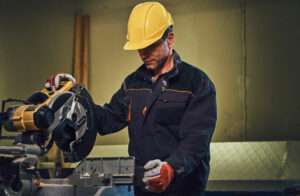Trends in Skilled Labor: Adapting to a Changing Landscape
In the ever-evolving landscape of the construction, industrial, marine, and green energy sectors, while the demand for skilled labor has never been more dynamic. These industries are witnessing significant transformations, driven primarily by technological advancements and shifting market demands. Staffing agencies, such as LEAD Staffing, are crucial players in connecting companies with the skilled trades and craft jobs workforce they need. In this article, we will explore the latest trends in the demand for skilled labor, delve into how technology is reshaping skillsets, and discuss how staffing agencies can adapt to this evolving environment.
The Evolving Skilled Labor Landscape
The skilled labor market has always been a cornerstone of these industries. while recent trends suggest that this trend is set to continue, with some notable shifts:
- Growing Demand for Specialization: In today’s industries, the demand for specialization within skilled trades is on the rise. Employers are seeking workers with expertise in niche areas such as renewable energy installations, advanced manufacturing, and high-tech construction methods. This shift is a response to the increasing complexity of projects, while the need for highly specialized skill sets increases as well.
- Aging Workforce and Retirements: The skilled labor force is aging while many experienced professionals are approaching retirement. According to the U.S. Bureau of Labor Statistics (BLS), over the next decade, more than half a million skilled trades workers are expected to retire. This leaves a substantial skills gap to be filled. A labor shortage in America is increasing while the need to fill the workforce becomes an issue.
- Technology-Driven Skills: The integration of technology into these industries is transforming the skillsets required. Workers have an expectation to be proficient while using digital tools, automation, and data analysis. Employers are seeking candidates who can adapt to new technologies while contributing to increased efficiency and productivity.
The Impact of Technology on Skillsets
Advancements in technology are reshaping the skillsets needed in these industries, while ushering in a new era of digital craftsmanship. Here are some key ways in which technology is influencing skilled labor:
- Digital Proficiency: Skilled laborers are now expected to be digitally proficient. This includes the ability to use Building Information Modeling (BIM) software and CAD systems. These and other digital tools are for project planning and execution.
- Automation and Robotics: Automation is becoming more prevalent in manufacturing and construction. Skilled workers must be capable of working alongside automated systems while understanding their operation, and troubleshooting when needed.
- Green Energy Expertise: As the green energy sector expands, workers skilled in renewable energy technologies, such as solar panel installation, wind turbine maintenance, and battery storage, are in high demand. The transition to sustainable energy sources is creating new opportunities within skilled labor.
- Data Analysis Skills: The ability to collect and analyze data is becoming essential. Skilled laborers are increasingly in need to monitor equipment performance, identify inefficiencies, and implement data-driven improvements.
How Staffing Agencies Like LEAD Staffing Can Adapt
In this evolving landscape, staffing agencies play a pivotal role in bridging the gap between employers and skilled laborers. Here’s how staffing agencies, like LEAD Staffing, can adapt to the changing demands of these industries:
- Specialization and Niche Expertise: Staffing agencies should develop expertise in specialized sectors like green energy or advanced manufacturing to better match employers with candidates possessing the required skills.
- Continuous Skills Assessment: Regularly assess and update the skills database to ensure candidates are up-to-date with the latest technological advancements and industry-specific requirements.
- Training and Upskilling Programs: Collaborate with employers to offer training and upskilling programs to candidates. This can help bridge skill gaps and ensure a steady supply of qualified workers.
- Diversity and Inclusion: Embrace diversity and inclusion practices to create a workforce that reflects the evolving demographics of skilled labor. Diverse teams bring a wider range of experiences and perspectives to the table.
- Leverage Technology: Utilize advanced recruitment technology, such as AI-driven candidate matching, to identify the best-fit candidates quickly and efficiently.
LEAD Staffing and Your Skilled Labor Needs
The trends in skilled labor demand are a result of technological advancements, evolving skill requirements, and changing market dynamics. Staffing agencies, like LEAD Staffing, are essential partners in navigating this complex landscape. With a focus on specialized fields and to the success of both job seekers and employers, LEAD Staffing stands out. We bridge the gap between your company and the skilled labor force required to excel in these industries. Navigate the evolving landscape of skilled labor with LEAD Staffing. Consider partnering with a reputable staffing agency like LEAD Staffing can make a significant difference.
Companies need to meet the challenges and opportunities presented by the changing landscape of skilled labor. Remember that partnering with a reputable staffing agency can make all the difference. LEAD Staffing is here to provide skilled labor employment solutions tailored to your company’s unique needs. Contact us today to learn how we can help you find the skilled trades and craft jobs professionals for you. Give you company the right staff to excel in the construction, industrial, marine, and green energy sectors.

























